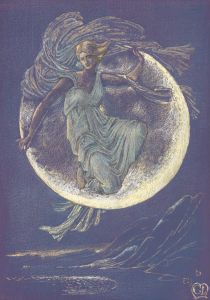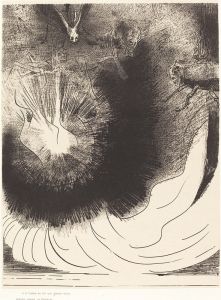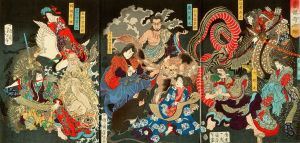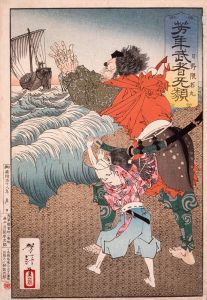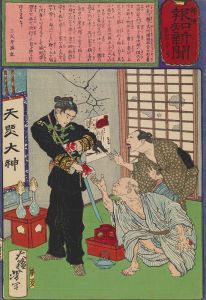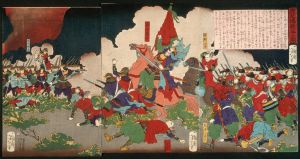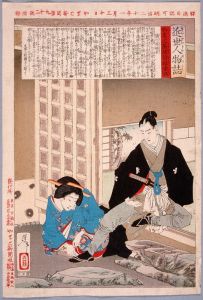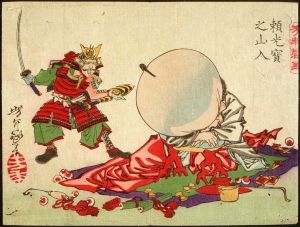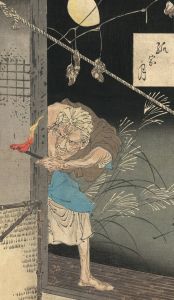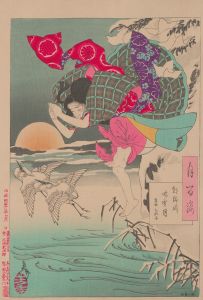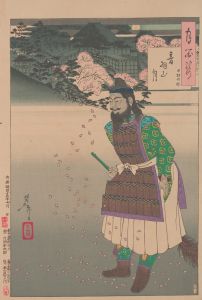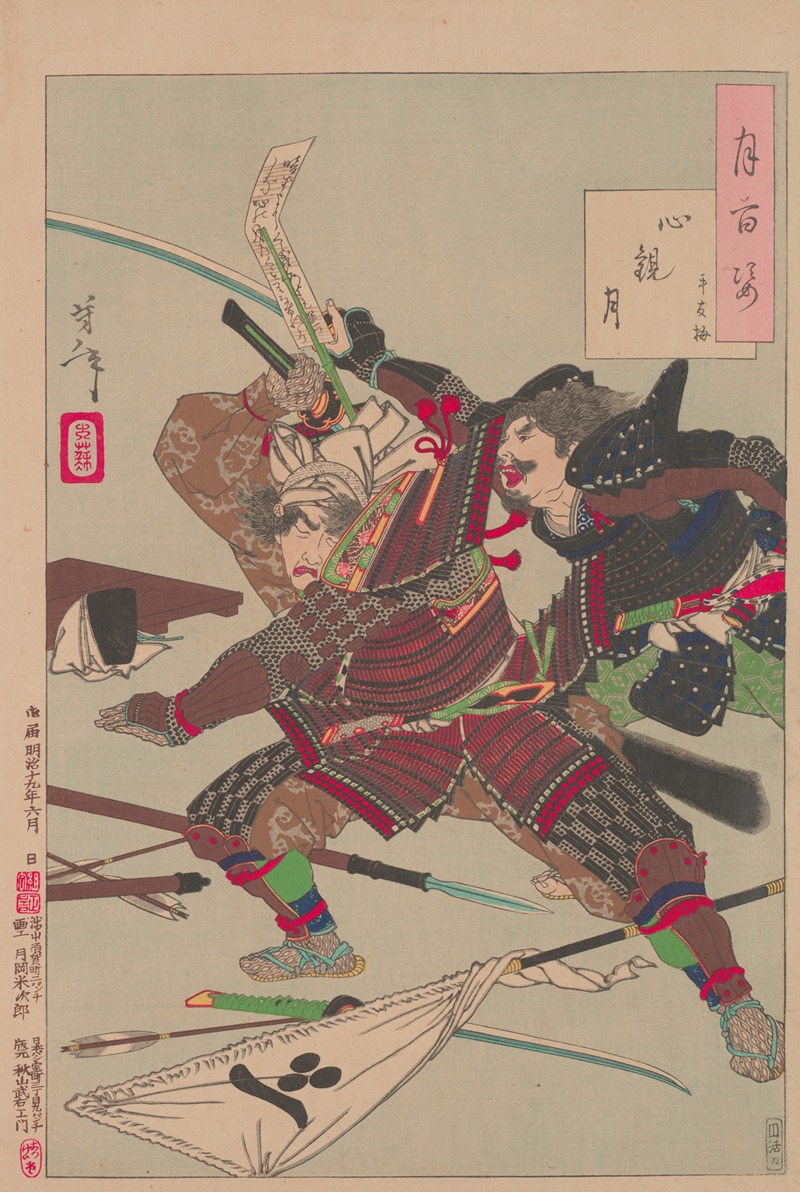
The moon’s inner vision
A hand-painted replica of Tsukioka Yoshitoshi’s masterpiece The moon’s inner vision, meticulously crafted by professional artists to capture the true essence of the original. Each piece is created with museum-quality canvas and rare mineral pigments, carefully painted by experienced artists with delicate brushstrokes and rich, layered colors to perfectly recreate the texture of the original artwork. Unlike machine-printed reproductions, this hand-painted version brings the painting to life, infused with the artist’s emotions and skill in every stroke. Whether for personal collection or home decoration, it instantly elevates the artistic atmosphere of any space.
Tsukioka Yoshitoshi (1839–1892) was a renowned Japanese artist known for his woodblock prints and paintings, particularly during the late Edo and early Meiji periods. He is often celebrated as one of the last great masters of the ukiyo-e genre of woodblock printing and painting. Yoshitoshi's work is noted for its dramatic intensity, innovative compositions, and the incorporation of Western techniques and perspectives, which were becoming more prevalent in Japan during his lifetime.
One of Yoshitoshi's notable series is "One Hundred Aspects of the Moon" (Tsuki hyakushi), which he created between 1885 and 1892. This series consists of 100 woodblock prints, each depicting a scene inspired by Japanese and Chinese legends, historical events, literature, and folklore, all unified by the motif of the moon. The series is considered one of Yoshitoshi's masterpieces and showcases his mature style, characterized by a blend of traditional Japanese aesthetics and modern influences.
"The Moon’s Inner Vision" is one of the prints from this series. While specific details about this particular print are limited, the series as a whole is known for its exploration of themes such as beauty, heroism, and the supernatural. Each print in the series typically features a prominent moon, which serves as a symbolic and unifying element across the diverse subjects depicted.
Yoshitoshi's work, including "The Moon’s Inner Vision," reflects his deep interest in the human condition and the complexities of emotion and experience. His prints often convey a sense of narrative depth, inviting viewers to engage with the stories and characters portrayed. The use of the moon as a central motif in the series adds a layer of mystery and contemplation, as the moon has long been associated with various symbolic meanings in Japanese culture, including enlightenment, solitude, and the passage of time.
Yoshitoshi's "One Hundred Aspects of the Moon" series was produced during a period of significant cultural and social change in Japan. The Meiji Restoration, which began in 1868, marked the end of the Tokugawa shogunate and the beginning of Japan's rapid modernization and Westernization. This era of transformation is reflected in Yoshitoshi's work, which often juxtaposes traditional Japanese themes with new artistic techniques and perspectives.
Despite facing personal and professional challenges throughout his career, including periods of mental illness and financial difficulty, Yoshitoshi's legacy endures through his innovative and influential body of work. His prints continue to be celebrated for their artistic merit and their ability to capture the complexities of the human experience.
In summary, "The Moon’s Inner Vision" by Tsukioka Yoshitoshi is part of a larger series that exemplifies the artist's skill and creativity. While specific details about this individual print may be scarce, it remains an integral part of Yoshitoshi's exploration of the moon's symbolism and its connection to human stories and emotions.





